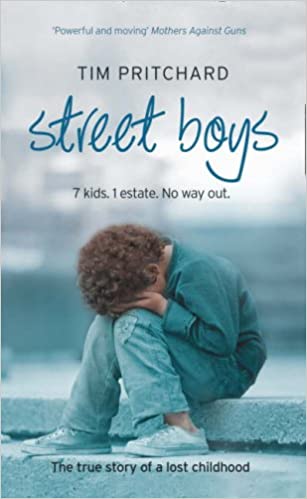When Black Became Beautiful
NAOMI CAMPBELL AND ME
It was every boy’s dream. I was behind the scenes at New York Fashion Week and some of the world’s most beautiful women were undressing in front of me. In the basement of the New York Public Library on 5th Avenue that served as the dressing and make-up room, I saw Linda Evangelista float by, Sophie Dahl chatting away in a corner, Alek Wek pouting into a mirror. With my head spinning I noticed that a gorgeous woman had sidled up to me. I turned round and Naomi Campbell was looking at me straight in the eye. “Have you got a light?” she asked expectantly. I looked around. She had chosen to ask the one person in the room who wasn’t puffing away on a cigarette. Since that day, one year ago, I have replayed with dismay the sound that came out of my mouth. “Er…..No,” I stuttered.
It was by far the best assignment that I had ever been given. For eight months I travelled through Europe and America meeting some of the 20th century’s most beautiful and sexy black women for a BBC documentary series. I spent the day in Los Angeles with actress and model Tyra Banks on the set of a Victoria’s Secret photo shoot, discussed with supermodel Waris Dirie her topless photo on the cover of the Pirelli calendar, gossiped with Su-Elise, Sabrina and Alesha of Mis-Teeq in a hotel room in London, flirted with Sudanese supermodel Alek Wek in a friend’s apartment in Paris and joked around with Iman in her plush offices in New York. What did I, a middle class, white boy from Orpington, do to deserve this? There was a point to it all. Honest.
We were telling the story of race and beauty in the 20th century. The series centred around the struggle of black women and men to be seen as beautiful in a world where the dominant beauty assets were white skin, straight hair, aquiline noses, thin lips and long necks. It led me on the trail of not only some of today’s most beautiful black women, but many of the black icons of the last fifty years including Mary Wilson of the Motown group, The Supremes, Nichelle Nichols who played Lieutenant Uhura in Star Trek, actress Diahann Carroll who appeared alongside Dorothy Dandridge and Harry Belafonte in Carmen Jones, and Prince Charles’s favourites, The Three Degrees.
With the kaleidoscope of looks that appear on today’s TV screens, magazine covers and in advertising campaigns, it’s hard to imagine that only fifty years ago it was all so different. Mary Wilson remembered growing up in Detroit surrounded only by white beauty icons. “The images we grew up with were women with blonde, straight hair. You didn’t have images that were African so you wanted to be like the majority culture,” she said. Helen Scott of The Three Degrees told of hours spent over a hot stove painfully trying to straighten her hair with a hot comb. The others spoke of playing with their noses to get them to look as petite as possible. Some even applied creams to lighten their skin. They spoke of the deep trauma of having to change themselves to appear acceptable to a white audience. Yet all of them, in spite of the changes in the beauty and fashion industries, still wear long, straight haired wigs.
With the rise of a black middle class in the United States in the late 50s, things began to change. Businesses used black models to advertise their wares in black magazines. But when one black model, Dorothea Towles, visited the model agencies to look for work in the mainstream white magazines she was shown the door. “They looked at me as if I had two heads,” she said.
In the late 50s, Ophelia deVore set up an all-black model agency with the aim of breaking into the white mainstream. She went to America’s corporations to convince them that they could make profits by selling to the black and white markets. “If we could persuade them that our models would help them reach the segmented market and not offend the majority market, then they would give it a try,” she said.
The first model to cross over into the mainstream market was Helen Williams. Significantly, she had features, which were safe for a white audience. Her nose was small and aquiline, her neck long and slender, her skin was light brown. “She looked like a white girl who happened to be chocolate brown,” said fellow model Audrey Smaltz.
In the early 60s there were only a few pockets of western life where black women were allowed to be beautiful and sexy. One of those pockets was the life of the Playboy Bunny. The other was the world of James Bond. Gloria Hendry was a star of both. As a Playboy Bunny, it didn’t matter that she had dark black skin or kinky hair. She mingled with girls from all over the world and her blackness was a sign of both exoticism and sophistication. As a Bond Girl she played Rosie Carver, Roger Moore’s love interest in Live and Let Die. Today, she lives in a modest house in a suburb of Los Angeles, surrounded by posters and photos of a society that was on the cusp of a new era. “We were just fed up. It was boiling, like a volcano. The lava was ready to come out,” she said.
In the 60s, the revolution in politics and civil rights extended to fashion and beauty. Black women began to refuse to style their hair according to a white ideal. American actress Cicely Tyson appeared on a long-running TV drama series “Eastside Westside” in short, natural hair. It was the birth of the Afro as a fashion and beauty statement that belonged to the black community. Photographers and magazine editors, anxious to reflect a changing society, promoted unconventional looks and dark skinned models. “It was black power. It was about people saying I want to reclaim me with pride in being a black person, not trying to be like an honorary white person. Not trying to look like them or fit into some box that’s not about who I am,” said Marcia Gillespie, editor of the black magazine Essence.
Essence’s policy was to reflect a range of looks across the black community – different hair styles, face shapes, skin colours. “We were trying to say, not only are you beautiful, but you are beautiful across a huge range of features,” said the magazine’s fashion editor, Susan Taylor.
In contrast, the mainstream white magazines like the bible of high fashion, Vogue, still stuck to the old formula. During the early 70s, the models appearing on its cover included Brooke Shields, Princess Grace of Monaco, Jerry Hall. “You stayed within the same standard of looks. You didn’t play with the cover. Don’t rock the boat,” said Grace Mirabella, American Vogue’s editor-in chief during the 70s.
In the hills of Hollywood we went to the house of the woman who set her heart on breaking through that barrier. In the early 70s, Beverly Johnson, an aspiring young black model from Buffalo moved to New York and worked her way up through teen magazines. “Model agents told me you’re not going to get on the cover of Vogue. They don’t put blacks on the cover. You should be happy with what you have. Who do you think you are?” said Beverly Johnson.
In 1974 Beverly Johnson got the call that she, and the whole of the black fashion community had waited for. She’d been selected as the first black woman on the cover of American Vogue magazine.
The 80s and 90s were a series of breakthroughs for black men and women. Iman paved the way, sending shockwaves through the magazine industry when she arrived in New York from East Africa. The stereotype of what sorts of looks sold magazines was breaking down. Vanessa Williams became the first black woman to win Miss America, black model Veronica Webb won a multi-million dollar contract as the face of a major cosmetics firm, Tyra Banks appeared on the cover of white America’s Sports Illustrated magazine and Alek Wek, a young Sudanese model, sashayed down the catwalks in London, Paris and New York.
By the end of the eight months I had met all these beautiful black women who had made major contributions to the changes in the way society interprets beauty. But there was one woman, at the top of her profession for over twenty years, who remained elusive. The BBC series would not be complete without her. We’d been chasing Naomi Campbell for months without success. She was always too busy, too far away, about to fly to Milan, about to leave London. We were ready to give up on her when, towards the end of our filming in New York, we suddenly got a call. If we hurried, we could catch her during a dress fitting in a studio in downtown Manhattan. We bundled into the van, careered through the city and piled into an anonymous warehouse on Broadway. We were late and knowing her reputation as an unpredictable diva I was anxious that she would have flounced off. We crept hesitantly into the room where she was doing her fitting and came face to face with a tall, gorgeous and pouting Naomi Campbell.
So, what was she like? Will you be disappointed if I say she was charming, entertaining and smiley? We talked about her life and her work and how she broke down the race barriers in the fashion industry by a combination of diplomacy, manipulation and force of character. That evening I saw her again behind the scenes at the New York Fashion Week catwalk show. She asked me, yes non-smoking me, for a light. It was the evening that Naomi Campbell tried to get me to ask her out on a date. That’s what I tell all my friends anyway.


